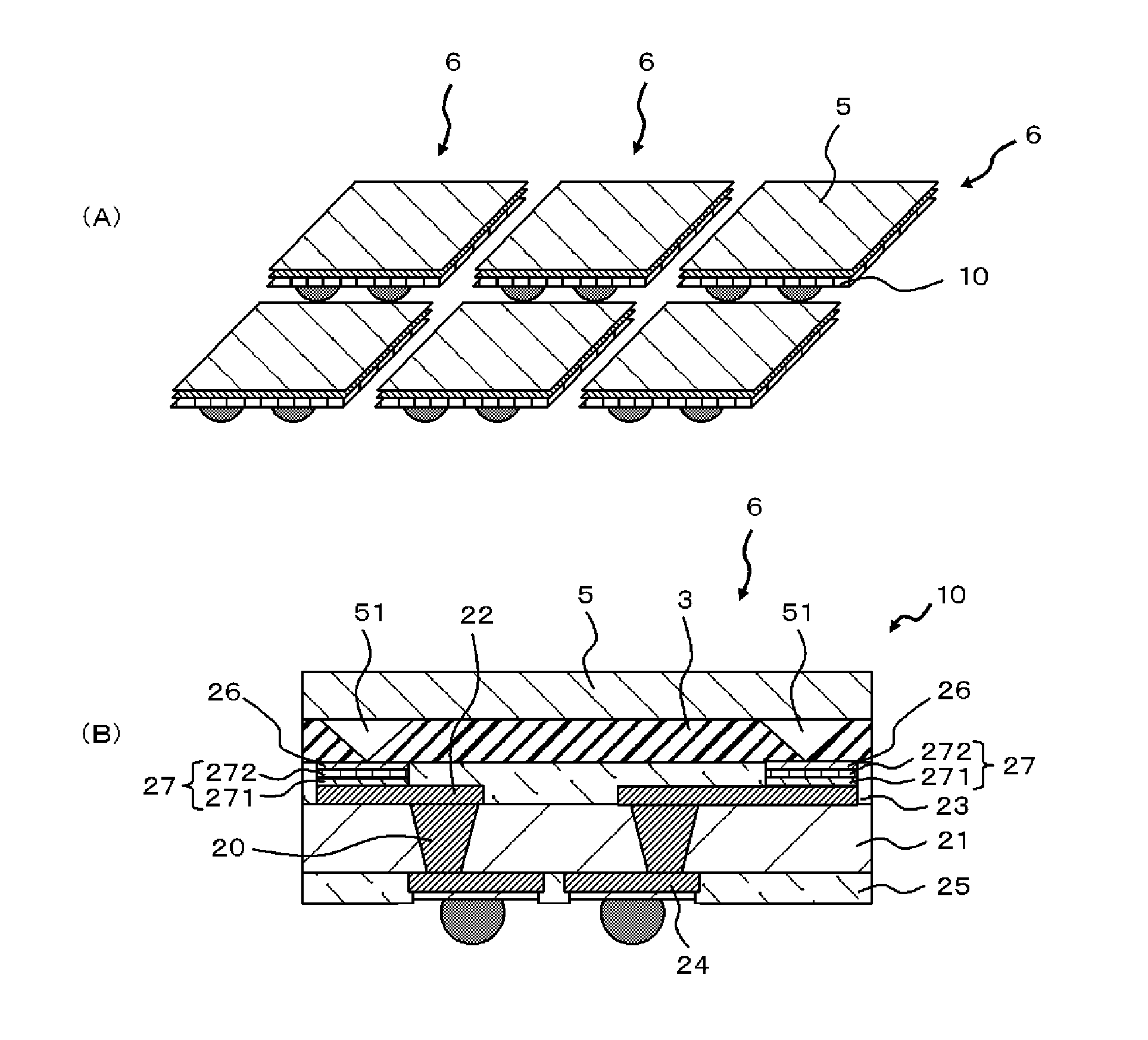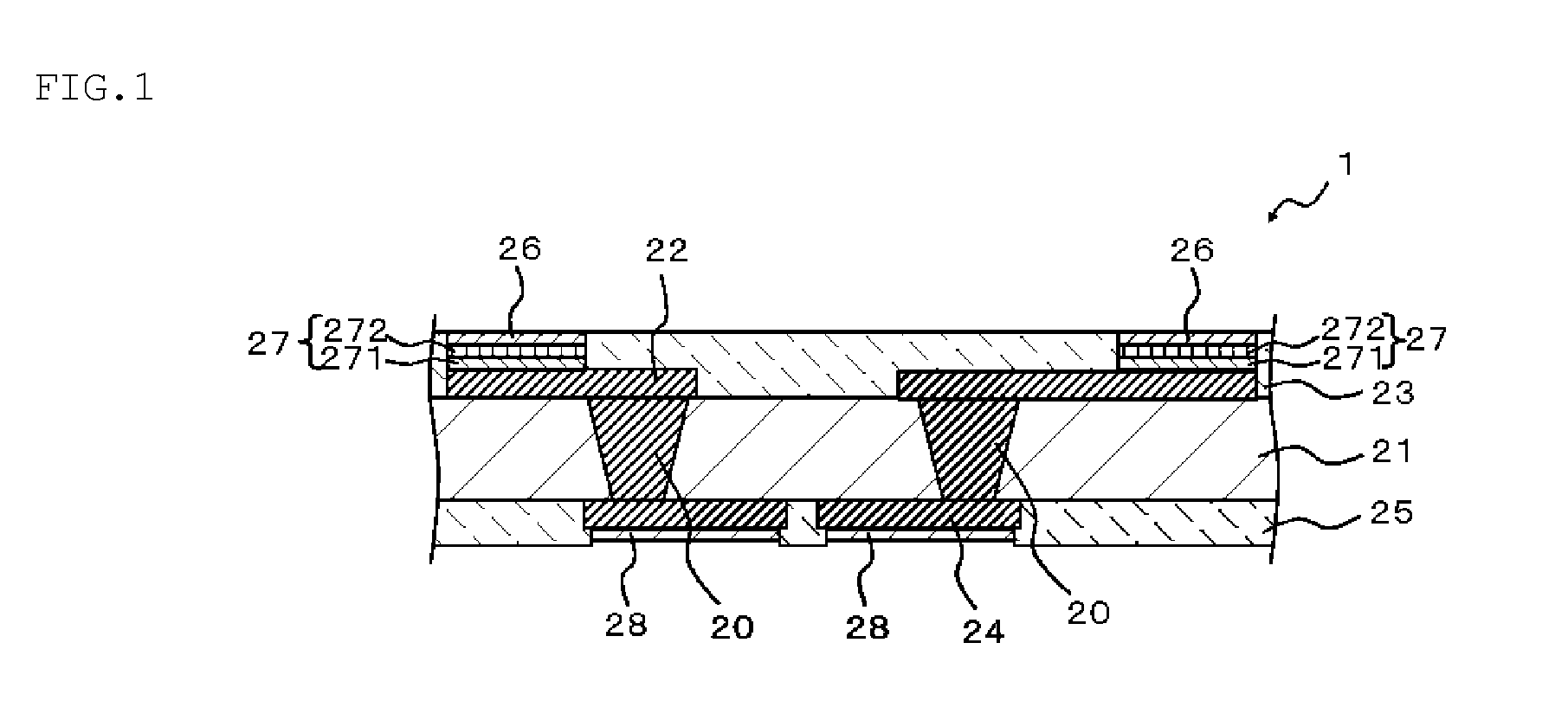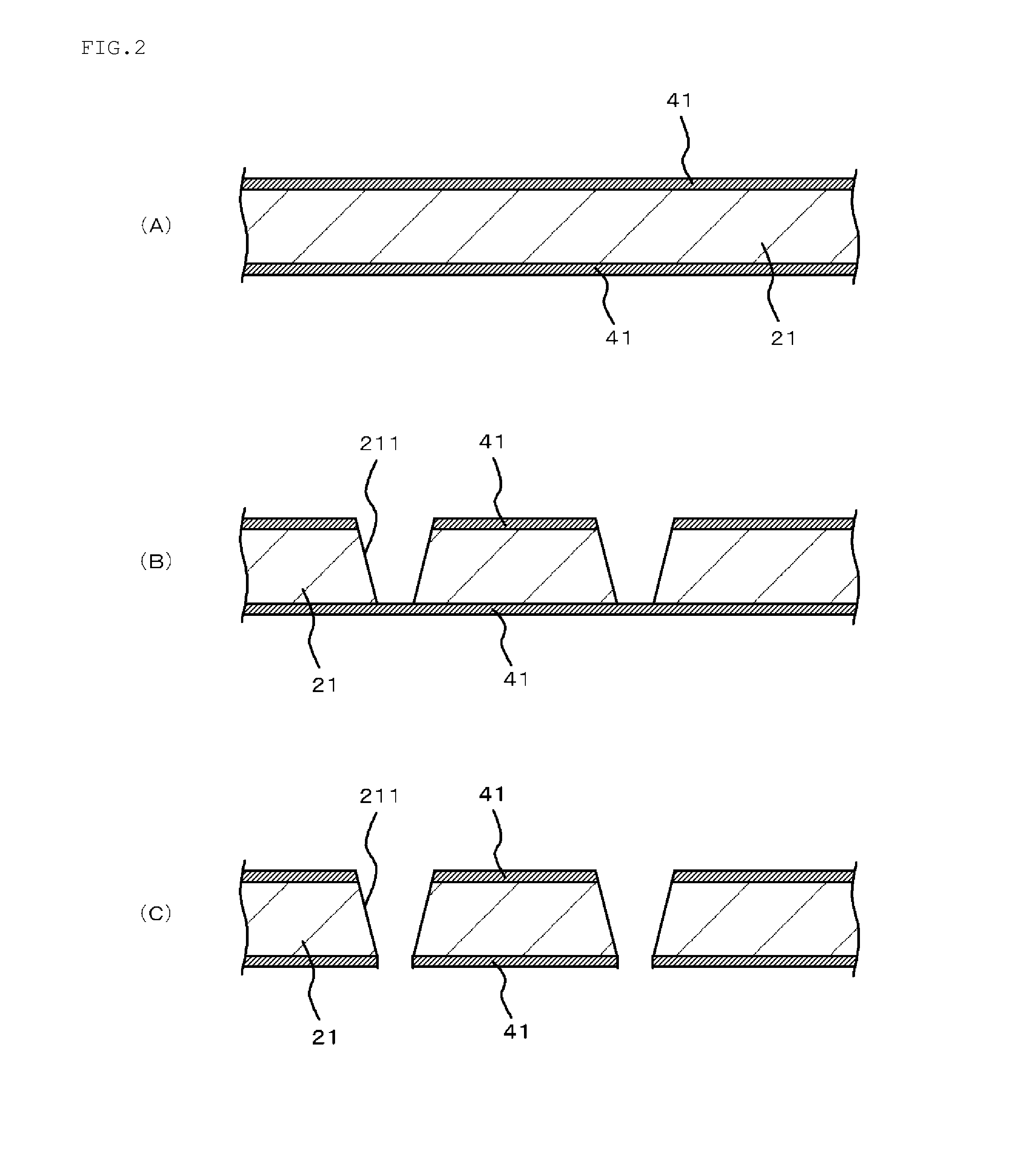Circuit board, semiconductor device, process for manufacturing circuit board and process for manufacturing semiconductor device
a technology for semiconductor devices and circuit boards, which is applied in the manufacture of printed circuits, printed circuit aspects, basic electric elements, etc., can solve the problems of warpage generation in the circuit boards, considerable degradation of the solubility of solvents, and deterioration of the film-forming ability, etc., to achieve the effect of increasing the thermal expansion coefficient of the insulating resin layer, and reducing the number of defects
- Summary
- Abstract
- Description
- Claims
- Application Information
AI Technical Summary
Benefits of technology
Problems solved by technology
Method used
Image
Examples
first embodiment
[0021]First embodiment of the present invention will be described on the basis of annexed figures as follows. In the beginning, an overview of a circuit board 1 of the present embodiment will be described in reference to FIG. 1. The circuit board 1 includes: a first insulating layer 21, through which an electric conductor 20 extends; a first circuit layer 22, provided in one side of the first insulating layer 21 and coupled to the electric conductor 20; a second insulating layer 23 covering the first circuit layer 22 and having an aperture created above a portion of the first circuit layer 22; a second circuit layer 24, provided in the other side of the first insulating layer 21 and coupled to the electric conductor 20; a third insulating layer 25 covering the second circuit layer 24; and a solder layer 26 provided in the aperture of the second insulating layer 23. An average coefficient of thermal expansion (A) of the first insulating layer 21 in the direction along the substrate s...
second embodiment
[0120]Second embodiment is similar to first embodiment except that a photosensitive polymer is employed for the second insulating layer 23 and the third insulating layer 25.
[0121]The second insulating layer 23 and the third insulating layer 25 may be composed of, for example, a resin composition containing (l) photosensitive polymer as an essential constituent.
[0122]The use of such resin composition allows easy patterning of apertures in the second insulating layer 23 and the third insulating layer 25 by an exposure and a development.
[0123]The type of the aforementioned (l) photosensitive polymer is not particularly limited to any specific polymer, and it may be formed by using a known photosensitive polymer composition. The aforementioned (l) photosensitive polymer may be negative type or positive type polymer. The aforementioned (l) photosensitive polymer may contain, for example, an acryl resin and the like, and an epoxy-modified acryl resin may be typically employed. Further, in...
example 1
[0129]A circuit board was produced by a similar process as employed in the above-described embodiments.
(First Insulating Layer)
[0130]The first insulating layer was manufactured as follows. 11 parts by weight (pbw) of biphenyl dimethylene based epoxy resin (commercially available from Nippon Kayaku Co., Ltd, brand name: NC3000FH) as the epoxy resin; 20 pbw of novolac based cyanate resin (commercially available from Lonza Japan Co., Ltd., Primaset PT-30); and 9.0 pbw of phenolic resin (commercially available from Meiwa Plastic Industries Ltd., brand name: MEH7851-4H) as the curing agent, were added to methyl ethyl ketone to be dissolved and dispersed. Further, 60 pbw of spherical fused silica (commercially available from Admatechs Company Limited, “SO-25R”, mean particle diameter 0.5 μm) as the inorganic filler was added to the solvent, and the solvent was stirred for 10 minutes by employing a high-speed stirrer to prepare a resin varnish having a solid content of 50% wt. A glass clot...
PUM
| Property | Measurement | Unit |
|---|---|---|
| thickness | aaaaa | aaaaa |
| Thickness | aaaaa | aaaaa |
| thickness | aaaaa | aaaaa |
Abstract
Description
Claims
Application Information
 Login to View More
Login to View More - R&D
- Intellectual Property
- Life Sciences
- Materials
- Tech Scout
- Unparalleled Data Quality
- Higher Quality Content
- 60% Fewer Hallucinations
Browse by: Latest US Patents, China's latest patents, Technical Efficacy Thesaurus, Application Domain, Technology Topic, Popular Technical Reports.
© 2025 PatSnap. All rights reserved.Legal|Privacy policy|Modern Slavery Act Transparency Statement|Sitemap|About US| Contact US: help@patsnap.com



